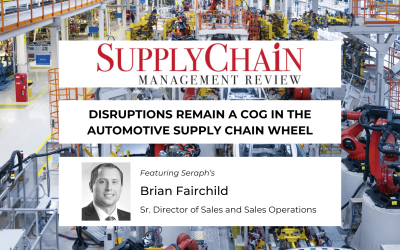Welcome back to our series on successfully completing a Relocation & Consolidation Activity. In this third article covering Seraph’s Move Methodology, we present several of the key steps in successfully completing Phase 2: Plan. The overall Move Methodology is composed of four phases: Align, Plan, Execute, and Closure, shown in Figure 1 – MOVE Methodology Overview below.
 Figure 1 – MOVE Methodology Overview
Figure 1 – MOVE Methodology Overview
Our first two articles focused on the keys to successfully aligning the project requirements between all parties. The key components of that first phase are:
- Feasibility Analysis
- Model Development
- High-Level Project Plan
- Process Transfer Strategy
- Product Family Transfer Strategy
- Supply Chain Transfer Strategy
This first phase is responsible for producing several important outputs:
- High-Level Management Plan: How progress will be measured and communicated to high-level stakeholders
- Operational Models: How the team will be structured
- Project Office: Where the team meets daily to review KPIs and take action to keep the project on track
Product and Process Workstreams
During the Plan Phase, the team must confront the details. The simplest way to understand the Product and Process Workstreams concept is through graphic representation. In Figure 2 – MOVE Methodology Project Structure, each distinct product workstream (noted by the vertical blue bars) is managed individually through the core business of process workstreams (noted by the horizontal grey bars). For each unique customer or product workstream, the appointed leader will plan on how to address all processes needed to support the successful move of the product.

Figure 2 – MOVE Methodology Project Structure
For example, if product A is being moved from facility X to facility Y, the workstream leader will need to understand and plan, with a team to support, for all aspects. In the MOVE Methodology, we utilize several categories, including:
- Commercial
- Human Resources
- IT/ERP
- Manufacturing/Production
- Logistics/Supply Chain
- Finance
- Quality/Regulatory
This process is repeated for each product group. Depending on the scope of the move (e.g. the number of products and locations), a relocation and consolidation project can grow large in both scope and team requirements. Done correctly, the planning phase will result in a detailed management plan and product/process workstream plans.
- The Product Workstreams must focus on carrying out the detailed activities to achieve the successful transfer/addition of physical products, equipment, and technology.
- Process Workstreams will focus on the transfer and provision of the support functions and will provide co-ordination across the activities of the product workstreams. Process Workstreams will also be responsible for carrying out the practical and legal activities relating to the closure of the clients’ sites.
The workstreams are controlled, integrated and supported by a Core Team made up of project-level leadership. The Core Team is overseen by a Steering Committee of senior business stakeholders.
Effectively Creating Detailed Plans
Creating detailed project plans requires a cross-functional team with the right framework. The tools and processes used to carry out these detailed plans blend standard project management tools with specific knowledge. The Seraph MOVE Methodology provides such a framework and utilizes an extensive checklist and toolset developed through years of experience managing production transfers, expansions, and reductions. When executed correctly, these plans lead to a successful outcome.
Conclusion
The plan phase of Seraph’s MOVE Methodology builds on the strategic alignment between Seraph and the client. In this second phase, the details begin to come together to understand what the team will accomplish, including both interim and final deliverables. It is in this phase that the details behind Who? What? and When? come into view using traditional project management tools. Once the master plans are in place, the team can move on to execution, which will be the subject of our next article.






